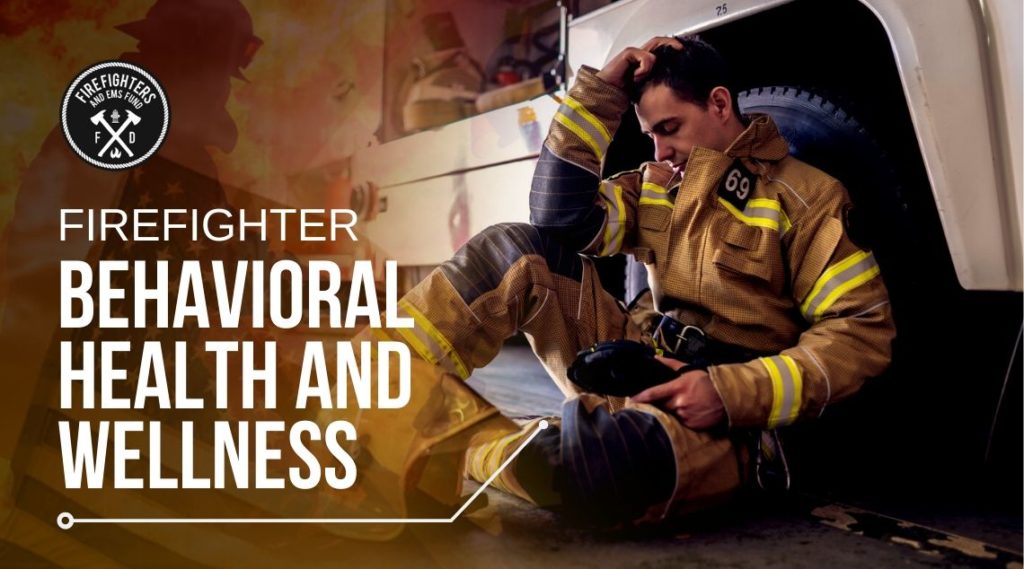At the end of a long day, many of us hang our hats at the door, and return home to decompress. Conflicts in the workplace, stressful commutes, and lingering deadlines may cause distress from time to time, but generally don’t keep us from living our best lives. But what if your job regularly exposed you to traumatic instances that you couldn’t just leave at work? While most of us don’t experience horrific accidents, deaths, and natural disasters, firefighters across the country deal with them every day. Add that to the long-standing stigma through lack of education, fear, and misunderstanding of those struggling with mental health issues, and firefighters are often left with serious behavioral health issues and a lack of resources to deal with them. Awareness of these issues, and establishing a plan for service workers is needed to create a psychologically safe place for those who risk their lives for us every single day.

According to the American Psychological Association, approximately 1 in 5 adults experience behavioral health disorders. Behavioral health refers to mental or emotional well-being and actions that affect wellness, and include substance use disorders, alcohol and drug addiction, and serious psychological distress, suicide, and other mental disorders. Startlingly, 1 in 2 firefighters reported having suicidal ideation in a 2015 Florida State University study. In addition to being exposed to potentially traumatic events at a higher rate than the mainstream population, firefighters must be alert even when resting, often work overnight shifts that disrupt natural sleep patterns, and are separated from family and friends for unusually long periods of time due to lengthy shifts. All of these factors contribute to an increase in stress; which has repercussions beyond mental illness itself.
The National Fallen Firefighters Foundation (NFFF) is a non-profit organization that recognizes firefighters who have lost their lives in the line of duty, and provides resources to their families. They released a Fire Service Behavioral Health Management Guide to help address the ongoing behavioral health issues many firefighters face. According to the guide, stress affects all body systems. Intense physical demands; hot, heavy and restrictive gear; and the difficult working conditions experienced by firefighters can amplify these reactions. Stress causes the “fight or flight” response controlled by the sympathetic nervous system, to kick in. Adrenal glands release adrenaline and cortisol hormones, which increase heart rate, blood pressure, and glucose levels. With chronic stress, the body’s systems may not be able to return to normal. Fatigue, cravings for sugary foods, excessive alcohol use, depression and irritability are some symptoms of the effects of chronic stress. Over time, these responses can damage the body’s systems in a myriad of ways, from an increase in coronary artery inflammation to weight gain to insomnia. All of these factors go beyond the basic behavioral health risk factors most people face, and make firefighters particularly susceptible to physical health issues.
Thankfully, there are some systems in place to help prevent these issues from going unchecked. After a traumatic experience, departments will hold a Critical Incident Stress Debriefing (CISD) by Critical Incident Stress Management (CISM) teams. CISM is a comprehensive, integrative, multicomponent crisis intervention system. CISM is used by some first responder agencies to provide support to personnel who have responded to a traumatic incident. However, even after a CISM, departments should continue to check in with employees using the behavioral health guide established by the NFFF, as well as its other behavioral health resources. While this program helps lessen the stress of the impact of a firefighter’s job, not all departments have the ability to create and manage a complete behavioral health program. Lack of leadership, education on behavioral health issues, and financial resources can keep entire departments in the dark, and at serious risk. According to the guide, the government also needs to lean in to help. “Government efforts related to behavioral health and physical health of the fire service are crucial to long-term advancements in providing support to firefighters. Institutionalizing insurance coverage for firefighters is challenging for both physical and behavioral health, but it can be done.”
Behavioral health should be looked at on par with physical health. If left untreated, conditions such as depression, post-traumatic stress, and anxiety are no less debilitating than diabetes, hypertension, or heart disease. Effective behavioral health programs begin and thrive with supportive leadership from fire chiefs, union executive boards, department management, and informal leaders throughout the department. If you know if a firefighter or anyone else is need of immediate support, please call the National Suicide Prevention Lifeline at 1-800-273-TALK (8255).
More so now than ever, fire departments must source income from places other than state and local governments, who are typically responsible for fire departments. This is where fire grant comes in. One of the most well known grant programs is the Assistance to Firefighters Grant or AFG. Learn more about AFG here.









